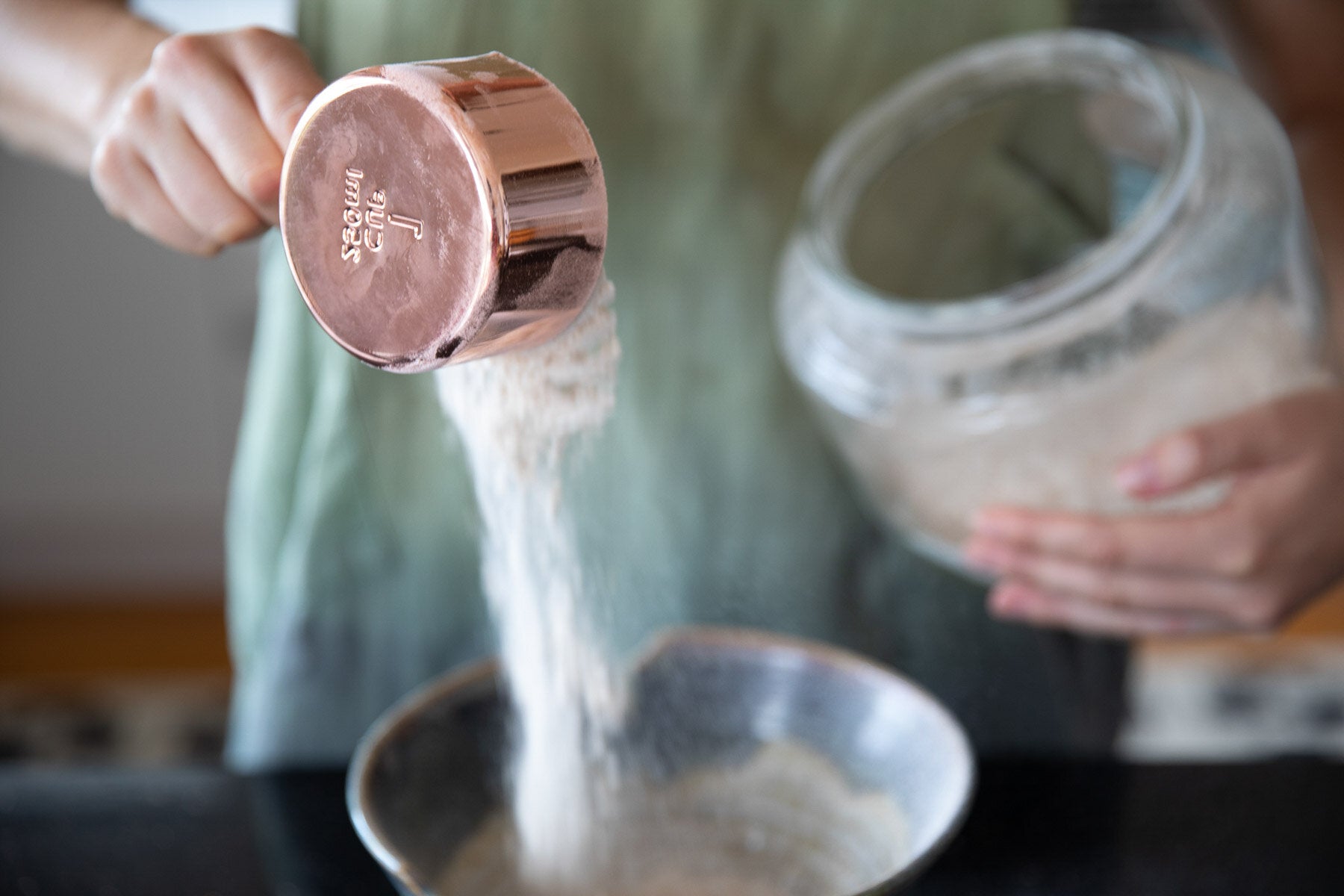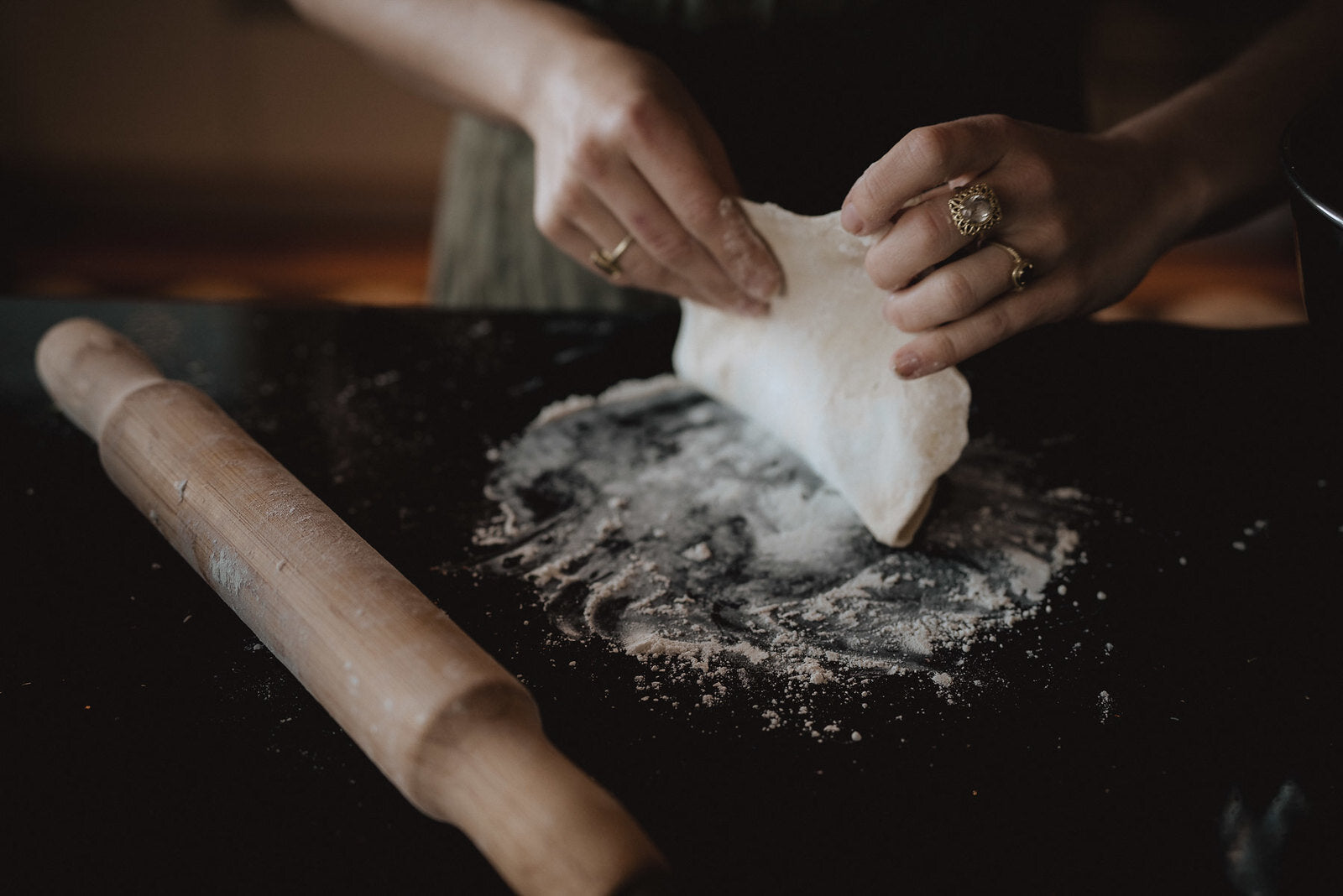
We are often asked for Ayurvedic gluten-free baking recipes, and our response is: GF isn’t a forever label. Issues with gluten can be resolved by supporting agni, the digestive fire. When agni is working well, it can process gluten without a problem.
We have supported many clients to heal gluten intolerance with our agni therapy program. Often people are enjoying new flours and grains within a matter of weeks. These augmenting foods are calming, grounding, and balance the doshas.
We don’t offer this recipe as a long-term solution to digestive issues, rather as a starting point so that you can experience the joy of baking your own bread as well as the healing that fresh, prana-filled bread can bring you. This recipe is also really nice for warm summer days when agni is a bit lower, or when you’d simply like a lighter option.
Rice delight chapati recipe
Serves 4
Preparation time: 20 - 25 minutes
Augmenting
You'll need
1 1/2 cup fine rice flour (you can grind your own by using 1 cup of white basmati rice)
1 tbsp extra virgin olive oil (ghee and cold pressed sunflower oil are great substitutions)
1/2 tsp salt
1 cup boiling water
1 tbsp ghee for cooking
Here's how
-
Heat a pan on low for 5 minutes (cast-iron is ideal for this).
-
Reserve 3 tbsp of flour for rolling the flatbreads later.
-
In a small or medium saucepan, add the water, salt, and oil. Combine and wait for it to come to a rolling boil.
-
Then, add the rice flour in one lump and wait a minute for the water to bubble around it.
-
Using a metal or wooden spoon, combine the water and the flour well quickly and cover the pan. Switch off the heat.
-
Let it rest for 5 to 10 minutes to cool down.
-
Because the mixture is hot, I usually start by separating the dough with a spoon into 6 rough small balls.
-
Dust each ball lightly in flour and roll in your hands briefly so it is smooth. Optionally you can flatten each ball into a disc shape, dust with flour on all sides, including the edge and stack them ready to roll.
-
Dust your kitchen surface and rolling pin with flour lightly. Roll out each disc into 2 mm thick circle. Roll lightly and only on one side, adding a little flour, when needed.
-
Coat the pan with a little ghee.
-
Flip the rolled flatbread onto the pan and cook on low to medium heat till bubbles start to appear all over.
-
Flip the flatbread and gently cook on the other side until cooked through. Some puffing will occur.
-
Keep the cooked flatbreads stacked up and covered in order for them to be soft and pliable.

Place the finished chapati in a covered dish. You may also spread more ghee on the chapati if you like (avoid this with a kapha imbalance).
Enjoy the chapati with your balanced Ayurvedic meal.
Tips
-
The entire process can be done with your hands, without utensils. Try it!
-
This recipe is easy and does not require any chemicals often found in gluten-free flour mixes.
-
Grind your own flour for maximum prana and taste. Hand or electric grinders are great.
-
Cast iron is ideal as it gets very hot and retains the heat.
-
Rice flatbreads can be made thicker or thinner depending on your preference. Adjust the cooking time accordingly.
-
Sometimes they puff up into a ball, which is always fun to watch.
-
For an efficient process, ask someone to roll the chapati while you cook. This is a great way for children to help out.
-
Add a pinch of spice for variation. Cinnamon, fennel, rose petals and black pepper are great ways to start.
Visit our Ayurveda Lifestyle page for kitchen essentials
